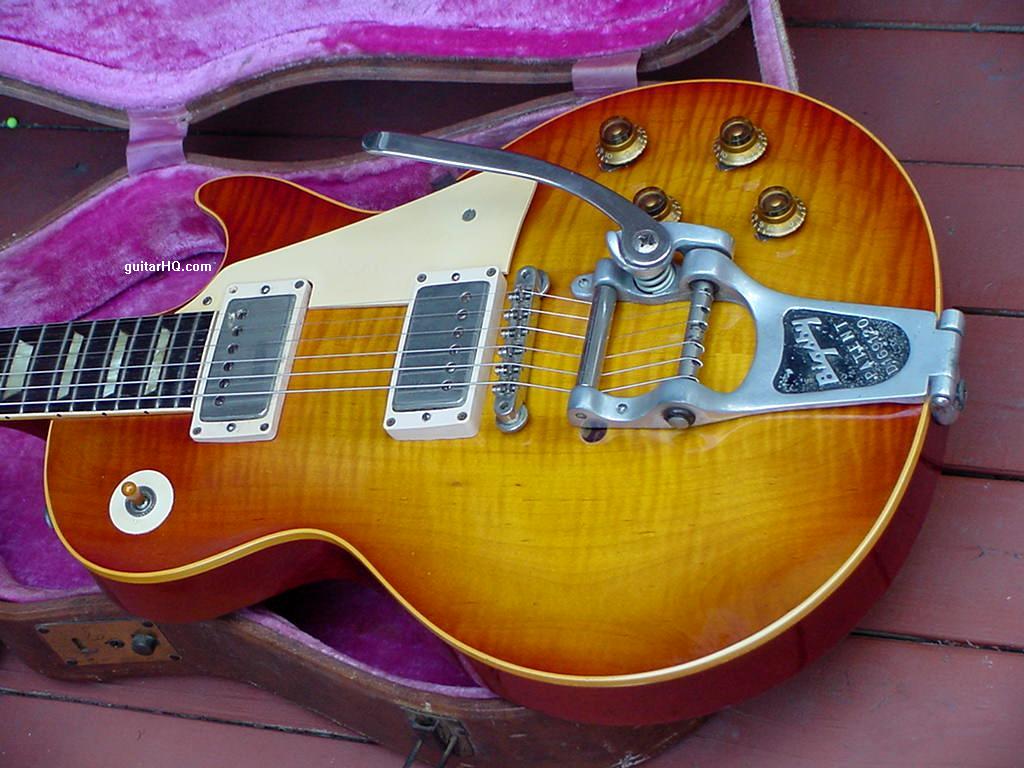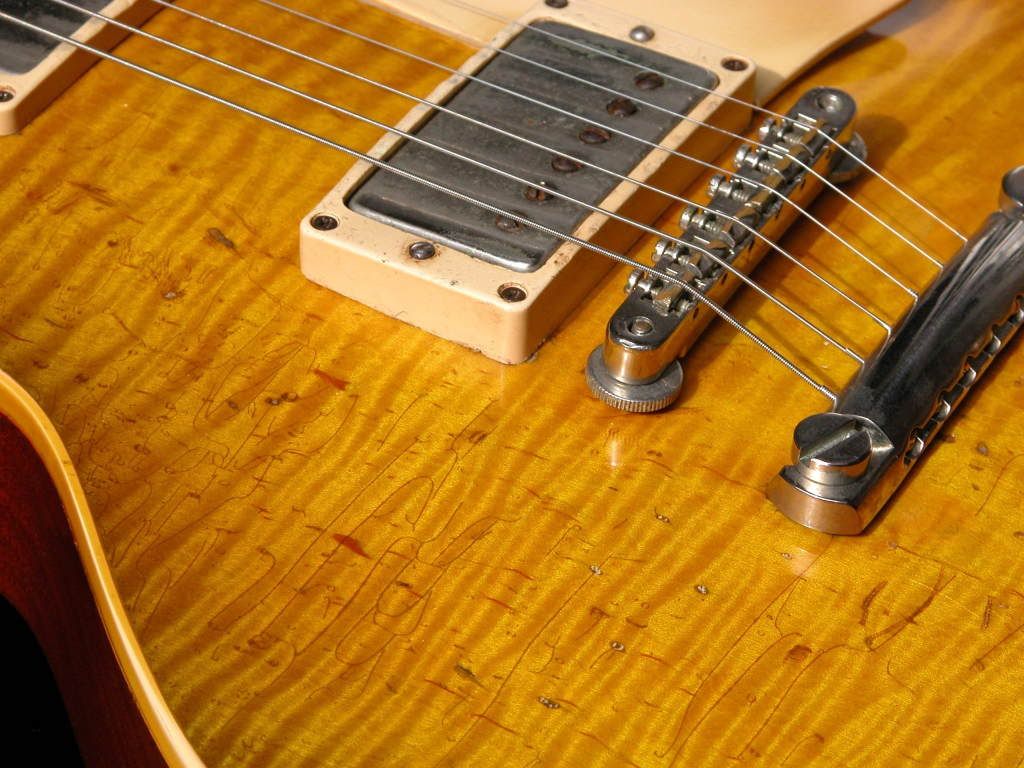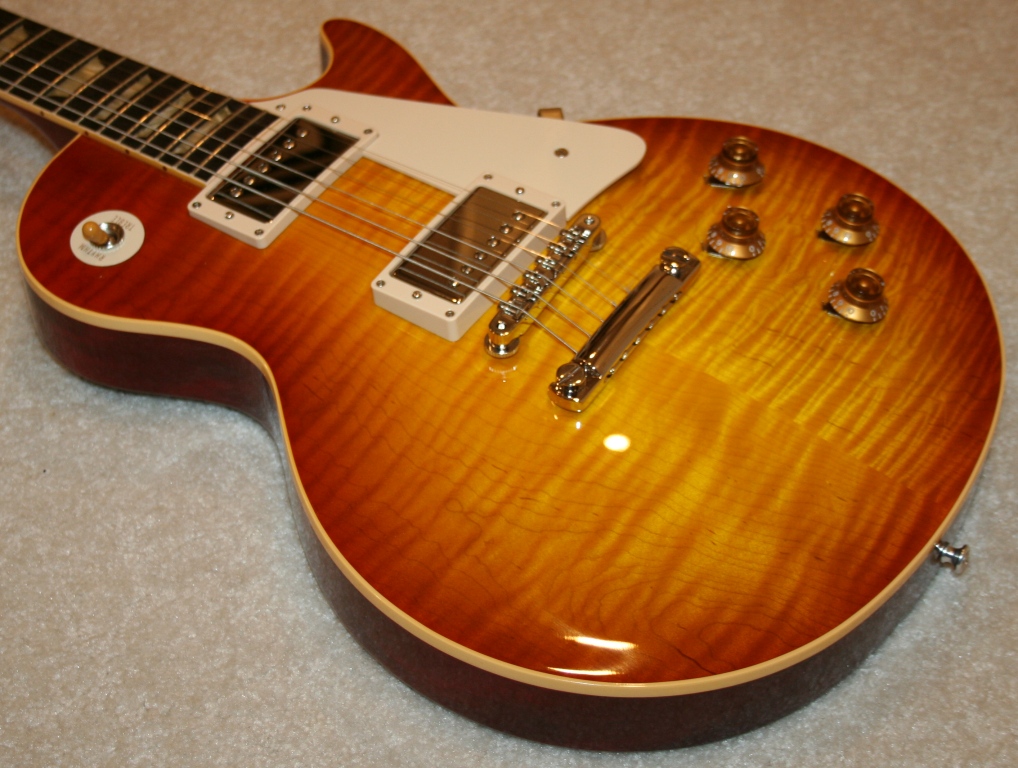I just got off the phone with the digitising company and they said £250 for the scann.
So what do you guys think??
Thread: les paul solid body
Results 201 to 220 of 265
-
04-22-2009, 10:08 AM #201
 Registered
Registered
- Join Date
- Jul 2003
- Posts
- 264
-
04-22-2009, 10:19 AM #202
 Registered
Registered
- Join Date
- Mar 2009
- Posts
- 4
That's pretty expensive. Also, I thought we were looking for a historically correct carved top. So not just any Les Paul will do.
-
04-22-2009, 11:23 AM #203
 Registered
Registered
- Join Date
- Jul 2003
- Posts
- 264
Currently I am doing the research such as finding the cost and problems that might arise, during the scanning process.
The price I mentioned seems reasonable for the UK, I asked somone else and they said £800
Also I know where vintage guitars are do you??
I also have some neck cross-section molds from a vintage LP which might consider digitising.
-
04-22-2009, 01:39 PM #204
 Registered
Registered
- Join Date
- Mar 2009
- Posts
- 4
-
04-22-2009, 02:10 PM #205
 Registered
Registered
- Join Date
- Jan 2007
- Posts
- 260
So that is about 360 or so US....
I am more than willing to contribute to the project, if others here are willing to pitch in a bit. I am also willing to do all the CAD work, to convert this file to whatever people need.
So, SLPD, you said you do have a guitar, or you would also need to find someone with one?------------------
http://www.cncguitar.com
-
04-22-2009, 05:51 PM #206
 Registered
Registered
- Join Date
- Apr 2009
- Posts
- 9
 59 Burst file
59 Burst file
Hey Guys,
I am willing to throw in cash as well. If all of those that feel the burning hearts desire to own a piece of HISTORY will stand together we can make this project possible. Everyone share to form a team effort.
-
04-22-2009, 06:25 PM #207
 Registered
Registered
- Join Date
- Jul 2003
- Posts
- 264
The guys at the company with the digitizer said they would like me to drop by with a guitar to see what problems may occure such as possible errors and discuss what could be done to prevent them.
I will see if I can find some time to take a guitar.
-
04-22-2009, 08:25 PM #208
 Registered
Registered
- Join Date
- Jan 2007
- Posts
- 260

EXCELLENT!
As you might already know,the problem with any laser scanner, is that the laser will reflect of a shinny surface. This reflection will cause "spikes" and other surface issues to occur.
To fix these, one can spent a lot of time with a program like Geomagic studio or rapidform, but depending on the scan, some issues just can not be fixed to the point where we would get a very smooth surface.
What we must strive for, is to get an accurate scan to begin with, and from my research, here is what we must strive to do, and I am sure others will have more ideas:
-Take off the pickguard, the strings, and the knobs at a minimum.
I am sure the people doing this know what they are doing, but some points in case we need to point them in the right direction.
SLPD, we can all send you the money via PayPal, if need be.
Looking forward to more progress and PRESERVING HISTORY! :-)
For some examples, here is a scan of a guitar that was done with a NextEngine scanner, and foot powder....look also at the machined part....------------------
http://www.cncguitar.com
-
04-22-2009, 09:00 PM #209
 Junior Member
Junior Member
- Join Date
- Jun 2007
- Posts
- 3891
i have a nextengine here, and was planning to scan my epiphone LP at some point. not quite the same as a gibby, but "close enough" for my needs.
scanning a real '59 - as gibson has done with their latest R9 incarnation is not that critical. every one was a little different. as the final shapes were sanded by hand and could be out at much as an 8th inch from one guitar to the next - and after sanding and painting, youre cnc'd replicas will also all be measurbly different. besides, i think its more authentic to do the rough carve like they they do at the factory and sand it smooth with a cardboard reference template made from the scan.
i think borowing/renting a reissue to scan will get you close enough to be considered a fair reproduction. noones gonna let you powder a real '59. they might not even want you powdering a $4000 R9. and it will need powder - or better water based primer! the scanner is very picky about surfaces and will scan contrasting colours at different heights. for example a black LP will come out a few mm smaller than a white one in the scan. you have to repair this when you make a solid model for milling, which in turn will also wipe out some of the subtleties in the scan.
on my epi i will be applying a matte primer that will wash of the polyurethane cleanly. ill rebuild the scan to a solidworks model, and then set it up for milling with a 1" ball nose.
anyhow, have fun. after carving one lp top by hand with a gouge cnc is definitely my preference for future builds.

-
04-22-2009, 09:16 PM #210
 Registered
Registered
- Join Date
- Jan 2007
- Posts
- 260
Sounds good.....
Care to share some of your results with the group?------------------
http://www.cncguitar.com
-
04-23-2009, 05:49 AM #211
 Gold Member
Gold Member
- Join Date
- Jun 2003
- Posts
- 2103
I don't think that is expensive at all. I know a place here in the US that uses laser, and the price will approach $700 based upon a small project I had done.
Could someone please show me with pics what the difference between one of the "desirable" LP's and one of the lesser desirable?
I might also be willing to get in on this, but I want to make sure it isn't one of the carved top profile that I don't like, and therefore the question about the pics.
Mike
ps for reference....I like the very smooth transition clycoid top as opposed to the one that has something akin to a flat border and an abrupt radius going into the arched top portion.No greater love can a man have than this, that he give his life for a friend.
-
04-23-2009, 02:27 PM #212
 Junior Member
Junior Member
- Join Date
- Jun 2007
- Posts
- 3891
that should be every les paul ever made by gibson or epiphone (or the better clones). the differences are all in the precise curve used, which as i said has been a function of the person sanding. if they are lazy one day, the top is a few mm thicker in spots. its still all the same general curve. on the '59 reissues, gibson needs something to market, so this year they took a real one and scanned, it and claim its now "correct". of course its not really true, and not much if any more correct than last years.
this is what the top looks like straight off the router (or the old patern carvers):

all the pattern you see there is from the ball end mill. on this particular model they just didnt sand it down smooth (among other things). from the look, i think they use a 1" ball nose or possibly larger, traversing left to right, with about a 1/2" stepover.
from there you buzz it with a plam sander for an hour or 2 guaging the top by eye - or with a template if you are set on matching a scanned model as close as possible.
i suppose if you have time to burn you could put the stepover ar 1/16" and get a smooth top right off with only minimal sanding afterwards, but again, its not necessarily going to mean its a more "correct" '59 top. especially after adding the finish.
ill post my result when i get around to scanning, but it may not be for many months. too much other crap to do
-
04-23-2009, 02:54 PM #213
 Registered
Registered
- Join Date
- May 2008
- Posts
- 52
By now I have measured three original bursts and one '53 GT and they all had a flat pickup plane, the bursts pickup plane are wider than the GT, but they are flat or almost flat as in one of the bursts I've measured. In this thread I have donated a file where the top is based on modern Les Pauls and they all, apart from some anniversary R9 I've seen, have a curved pickup plane, just like the one ihavenofish posted.
I'm convinced that there are 50's les paul with a curved, rounded pickup plane, but for me the flat pickup plane is one of the most important design feature that distinguish the burst.
-
04-23-2009, 03:25 PM #214
 Junior Member
Junior Member
- Join Date
- Jun 2007
- Posts
- 3891
-
04-23-2009, 03:44 PM #215
 Registered
Registered
- Join Date
- May 2008
- Posts
- 52
It's quite hard to see on a pic, but if you look at the pickup rings on many, many bursts you'll see that they are flat, not bended like a modern les paul. If I may quote John Catto from another forum regarding the top carve:
"That's how it should be. Curved decks are for production standards and Historics with a lousy top carve
Joking aside it's surprising how flat the late 50's guitars can be. Check out this pic, at the bridge pickup it's dead flat and extends as such well past the pickup rings, at the neck it has just the faintest whiff of a curve on the bridge side which is accented just a bit by the ring shrinking and pulling up."
The pic John talks about is missing so I'm showing you this instead. If you look at the pickup rings you'll see that they actually are flat.

-
04-23-2009, 04:22 PM #216
 Junior Member
Junior Member
- Join Date
- Jun 2007
- Posts
- 3891
i think ill chalk that up to entirely sloppy workmanship. the "new" historic seems to have a flatter bridge area, but the neck pickup ring it clearly curved, as is the real '59 above it.
the one you post is also slightly curved at the neck, but the pickup ring is badly mounted with small gaps at each end.
i would say this is in keeping with what i said about each one varying as much as 1/8". its all up to the fellow sanding and the type of effort he/she puts in, or perhaps even his own personal thoughts on whats better.
what i think this boilds down to for the people wanting to make a cnc lp in this thread is that it isnt going to matter much which one they scan or copy. each person can mill their reference patern, and sand to suit - or perhaps alter the cad file on their own.
-
04-23-2009, 05:29 PM #217
 Gold Member
Gold Member
- Join Date
- Jun 2003
- Posts
- 2103
I think the above two paragraphs says a lot! After seeing these photos, I now know that the guitars I have seen that did not look like true LP's to me, were in fact, not! If there are so many differences between multiple guitars from the factory, why would there be a need to try to replicate just one? It sounds like to me that close is a good as Gibson got, so that should be adequate? Yes/no?
MikeNo greater love can a man have than this, that he give his life for a friend.
-
04-24-2009, 05:46 AM #218
 Registered
Registered
- Join Date
- Oct 2006
- Posts
- 91
No ball nose was used but a mulit gang saw. check out one of the Gibson video shop tours..all the pattern you see there is from the ball end mill. on this particular model they just didnt sand it down smooth (among other things). from the look, i think they use a 1" ball nose or possibly larger, traversing left to right, with about a 1/2" stepover.
yes a stroke sander.. however no need for rough carves unless you are using the gang saw..scanning a real '59 - as gibson has done with their latest R9 incarnation is not that critical. every one was a little different. as the final shapes were sanded by hand and could be out at much as an 8th inch from one guitar to the next - and after sanding and painting, youre cnc'd replicas will also all be measurbly different. besides, i think its more authentic to do the rough carve like they they do at the factory and sand it smooth with a cardboard reference template made from the scan.
The real issue seem to be is the recurve or lack of. I like Mag's 2nd to last shape that has a 59 vibe better than his last shape he showed.
Here is a 1952 you can see the archtop like re-curves ..
 keep on trucking!
keep on trucking!
www.liquidguitars.com
-
04-24-2009, 02:46 PM #219
 Registered
Registered
- Join Date
- May 2008
- Posts
- 52
I just thought I'd show you the pic from the John Catto quote I posted earlier, I just found it.

-
04-24-2009, 03:09 PM #220
 Junior Member
Junior Member
- Join Date
- Jun 2007
- Posts
- 3891
gang saw (patern carver) is long gone aparently. tops are all done on a multi spindle router now. i guess they switched when they started chambering.
said saw:



i used to have a picture of the new cnc router doing bodies, but i cant find it now.
in any case, how smooth you make the top is just a matter of how long you want to wait. most hobby people i imagine can let it run as long as they want. gibson doesnt as there is a point where its not cost effective.
anyhow, the only point of bringing up this pattern carver was to say that all the "real" 59's vary significantly, so i dont know how critical it is to try and pick one specific feature and dwell on it for accuracy.
Similar Threads
-
Surface body, Solid body
By CAD123 in forum Community Club HouseReplies: 0Last Post: 09-11-2013, 02:00 AM -
Adding solid body
By crolee in forum MastercamReplies: 1Last Post: 04-30-2013, 08:53 AM -
Les Paul Hollow Body Copy
By gregmary in forum Musical Instrument Design and ConstructionReplies: 207Last Post: 04-11-2011, 12:55 AM -
Ibanez jem 77 solid body
By rockerfx in forum Musical Instrument Design and ConstructionReplies: 2Last Post: 07-10-2008, 12:07 PM -
Solid Extrude Cut Body
By Mastercam User in forum MastercamReplies: 2Last Post: 12-01-2007, 05:48 PM






 Reply With Quote
Reply With Quote




